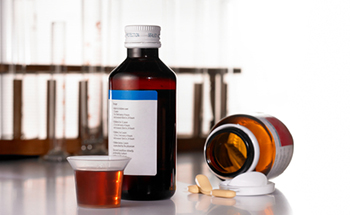Estimated at over $24 billion at the manufacturers’ level in 2014, the U.S. nonprescription drugs market shows interesting opportunities for its players, posting growth in five out of the seven product classes tracked in Kline’s annual Nonprescription Drugs USA report. Let’s take a look at the top three drivers behind this market’s success:
- Rx-to-OTC switches – the big game changer
Rx-to-OTC switches represent the core driver of market growth as they involve large, popular brands, bringing former prescription users to the OTC market. According to our recently released Rx-to-OTC Switch Pipelines USA: Competitive Assessment, the increasingly favorable regulatory environment facilitated the approval of four new and important switches, in categories that five years ago would have been considered as challenging.
The launch of Sanofi’s Nasacort Allergy 24HR to the OTC market in February 2014 was a real success, generating sales of over $100 million in the upper respiratory product class, in less than a year. Early in 2015, two additional intranasal steroid switches receive approval to enter the OTC market: GlaxoSmithKline’s Flonase Allergy Relief and Johnson & Johnson’s Rhinocort Allergy Spray. Flonase has brought additional sales to this category, and Rhinocort Allergy Spray is expected to be launched in late 2015 or early 2016 to coincide with the allergy season. Lastly, the introduction of Pfizer’s Nexium 24H to the OTC market has contributed to a good portion of digestive products’ sales, recording over $100 million in sales, in the first six months of its mid-2014 retail launch. For a clearer view of the recently approved switches, request your free copy of Rx-to-OTC Switches Overview, 2005 to 2015 chart.
- Increased mergers and acquisitions activity
Mergers and acquisitions are gaining steam, reshaping the competitive landscape of the nonprescription drugs market. For instance, in April 2014, Novartis announces a major OTC joint venture with GlaxoSmithKline, creating the world’s largest Consumer Healthcare division with estimated annual global revenues of $10 billion. Market leader Johnson & Johnson divests global rights of its leading personal lubricant brand K-Y to Reckitt Benckiser in March 2014.
Bayer Group, the second largest market player, closes the acquisition of the global consumer care business of Merck on October 1, 2014. The deal is signed in May 2014 after many suitors, including Reckitt Benckiser, participated but ultimately withdrew from the bidding.
- The return of recalled products
Several recalled brands that re-launch in 2014 also contribute to the overall sales growth of the OTC drugs market. Among these are well-known Johnson & Johnson’s key brands: Tylenol Cold, Sudafed, Simply Sleep, Benadryl, and Tylenol Sinus, as well as Novartis’ Prevacid 24 Hour, Maalox, Excedrin, and Benefiber. GlaxoSmithKline’s weight loss medication Alli is also back on shelves, bolstered by various educational programs to support its sales. The product was re-called in early 2014 due to tampering issues with its packages. Nicorette lozenges and mini-lozenges by GlaxoSmithKline also re-launch in early 2015, after the manufacturer re-called the product in June 2014 due to some batches that did not meet manufacturing standards.
2015 and 2016 represent an interesting time for the nonprescription drugs market, which is expected to reinvent itself with new switches and competitors emerging. We reveal more about these in the 42nd edition of our illustrious Nonprescription Drugs USA report. Focusing on key trends, developments, challenges, business opportunities, new product activity, brand sales and shares, retail distribution, regulatory developments, and five-year sales forecasts, this must-have report will provide you with a complete view of the U.S. OTC market.
Written by Marcela Chifu, Marketing Executive

